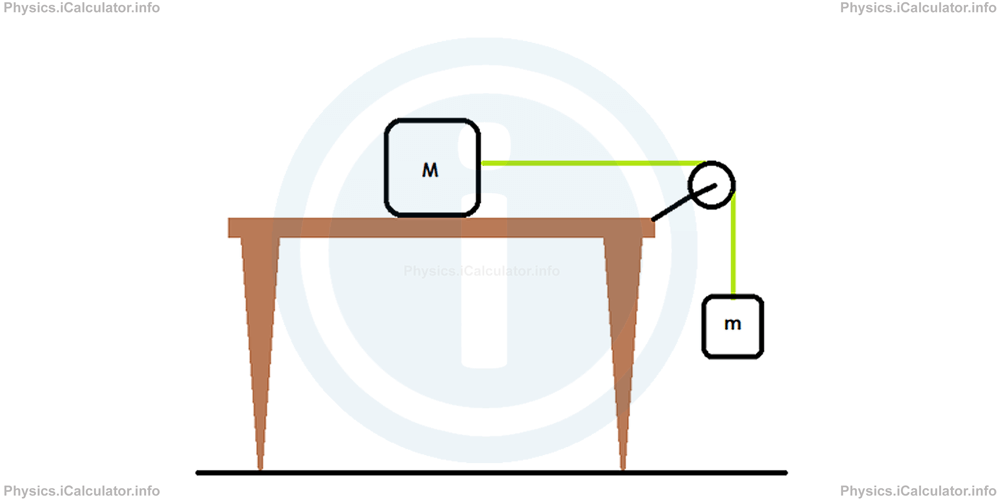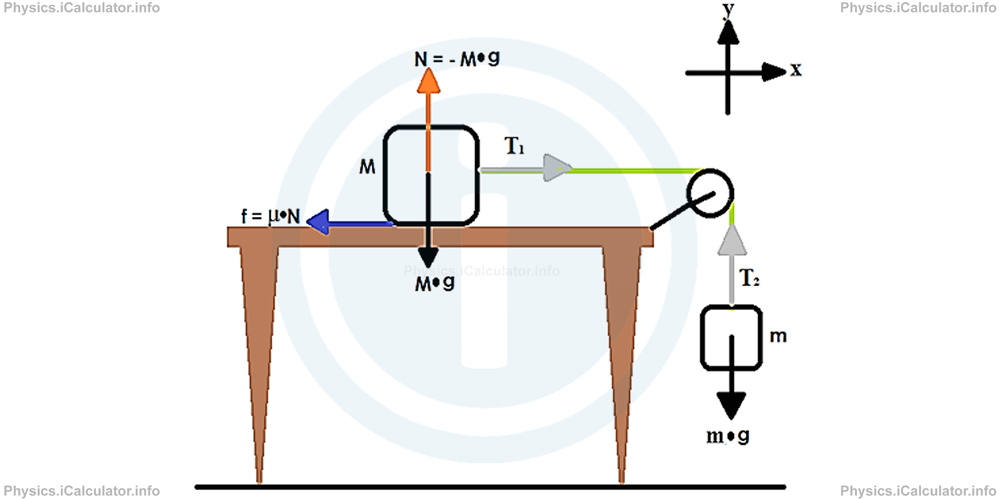Menu
Physics Lesson 4.6.3 - The Standard Procedure Used for Solving Exercises on the Newton's Second Law of Motion
Please provide a rating, it takes seconds and helps us to keep this resource free for all to use
Welcome to our Physics lesson on The Standard Procedure Used for Solving Exercises on the Newton's Second Law of Motion, this is the third lesson of our suite of physics lessons covering the topic of Newton's Second Law of Motion, you can find links to the other lessons within this tutorial and access additional physics learning resources below this lesson.
The Standard Procedure Used for Solving Exercises on the Newton's Second Law of Motion
Since the situations involving Newton's Second Law of Motion are a bit complicated, it is advisable to use the standard procedure shown below to solve them easier. This procedure consist in 6 steps:
- Plotting a force diagram in which all forces acting at the object (or the system of objects) are shown,
- Choosing a suitable pair of axis to show the direction of forces,
- Drawing the components of forces where necessary,
- Writing Newton's Second law of Motion according to both directions for all objects involved. The equation(s) of the perpendicular direction to the (possible) motion are used as auxiliary equation that helps to find any missing quantity that appears in the equation(s) according the direction of motion (in our previous example, we used the component Fg(y) of gravitational force to find N and then the frictional force f through it),
- Substituting the known values in the active equation(s), i.e. in the equations that contain the forces according the direction(s) of motion, and
- Making the calculations and finding the result.
Example 4
A system is composed by two objects connected through a non-extendable string that passes through a fixed pulley, as shown in the figure below.

The mass of the large object is M = 5 kg and that of the small one is m = 2 kg.
- What is the tension T in the string?
- What is the minimum friction coefficient μ so that the system remain at rest?
The pulley causes no friction to the string. Take g = 10 N/kg.
Solution 4
Let's apply the abovementioned procedure to solve this problem.
- The forces diagram acting at the two objects is shown below:

- The directions here are the standard ones, i.e. x for horizontal and y for the vertical.
- Here we don't need to split any force vector in components as all, forces lie according one of the two basic directions.
- Normally, for a system composed by two objects we would have four different equations: two for the horizontal and two for the vertical direction. However, it is not necessary to write any equation for the horizontal direction of the object m as it moves only vertically. Therefore, we write only three equations for this system:
i. For the object M according x:
ii. For the object M according y:
iii. For the object m according y:
The active equations are (i) and (iii). The second equation helps to determine the normal force N, which on the other hand is used to calculate the frictional force f.
Also, giving that T is the tension caused by the stretching of the string and since there is the same string passing through the pulley, we have T1 = T2 = T.
Another thing to mention here is that acceleration is zero because the problem says the system is not moving. Therefore, a1 = a2 = a.
- The system composed by the two active equations, therefore is
- From the second equation of the system, we have
6a
m × g - T = 0T = m × g
= 2kg × N/kg
= 20N
6b
T - μ × M × g = 020 - μ × 5 × 10 = 0
20 = 50 × μ
Thus,
=0.4
You have reached the end of Physics lesson 4.6.3 The Standard Procedure Used for Solving Exercises on the Newton's Second Law of Motion. There are 3 lessons in this physics tutorial covering Newton's Second Law of Motion, you can access all the lessons from this tutorial below.
More Newton's Second Law of Motion Lessons and Learning Resources
Whats next?
Enjoy the "The Standard Procedure Used for Solving Exercises on the Newton's Second Law of Motion" physics lesson? People who liked the "Newton's Second Law of Motion lesson found the following resources useful:
- Process Feedback. Helps other - Leave a rating for this process (see below)
- Dynamics Physics tutorial: Newton's Second Law of Motion. Read the Newton's Second Law of Motion physics tutorial and build your physics knowledge of Dynamics
- Dynamics Revision Notes: Newton's Second Law of Motion. Print the notes so you can revise the key points covered in the physics tutorial for Newton's Second Law of Motion
- Dynamics Practice Questions: Newton's Second Law of Motion. Test and improve your knowledge of Newton's Second Law of Motion with example questins and answers
- Check your calculations for Dynamics questions with our excellent Dynamics calculators which contain full equations and calculations clearly displayed line by line. See the Dynamics Calculators by iCalculator™ below.
- Continuing learning dynamics - read our next physics tutorial: Newton's Third Law of Motion
Help others Learning Physics just like you
Please provide a rating, it takes seconds and helps us to keep this resource free for all to use
We hope you found this Physics lesson "Newton's Second Law of Motion" useful. If you did it would be great if you could spare the time to rate this physics lesson (simply click on the number of stars that match your assessment of this physics learning aide) and/or share on social media, this helps us identify popular tutorials and calculators and expand our free learning resources to support our users around the world have free access to expand their knowledge of physics and other disciplines.